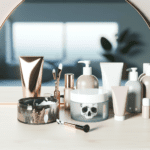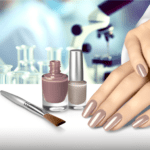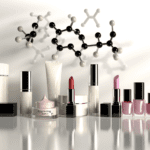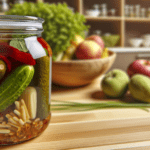Introduction to Benzophenone
Understanding UV Filters and Their Role
Ultraviolet (UV) radiation from the sun can cause significant damage to biological systems, leading to skin aging and an increased risk of skin cancer. To mitigate these effects, UV filters are incorporated into various products. These substances, either organic or inorganic, absorb or reflect harmful UV rays, thus protecting the skin and other materials from damage. Organic UV filters, such as benzophenone derivatives, are particularly effective due to their ability to absorb a broad spectrum of UVA and UVB radiation.
The Prevalence of Benzophenone in Products
Benzophenone and its derivatives, especially benzophenone-3 (BP-3), have been widely used in personal care products like sunscreens, shampoos, and cosmetics. Their prevalence extends beyond skincare, finding their way into plastics, food packaging, and even the environment. Despite regulatory efforts to limit their concentration due to health concerns, these compounds remain ubiquitous, with a significant portion of the population showing exposure through various routes.
Initial Appeal of Benzophenone
The initial appeal of benzophenone in commercial products was its effectiveness as a UV stabilizer and filter. Its ability to absorb UV radiation across a broad range made it an ideal ingredient in sunscreens and other personal care products. Additionally, benzophenone’s antioxidative properties contributed to its popularity, as it could protect products from UV-induced degradation, thereby extending their shelf life. However, the growing body of research highlighting potential health risks has led to increased scrutiny and a reevaluation of its widespread use.
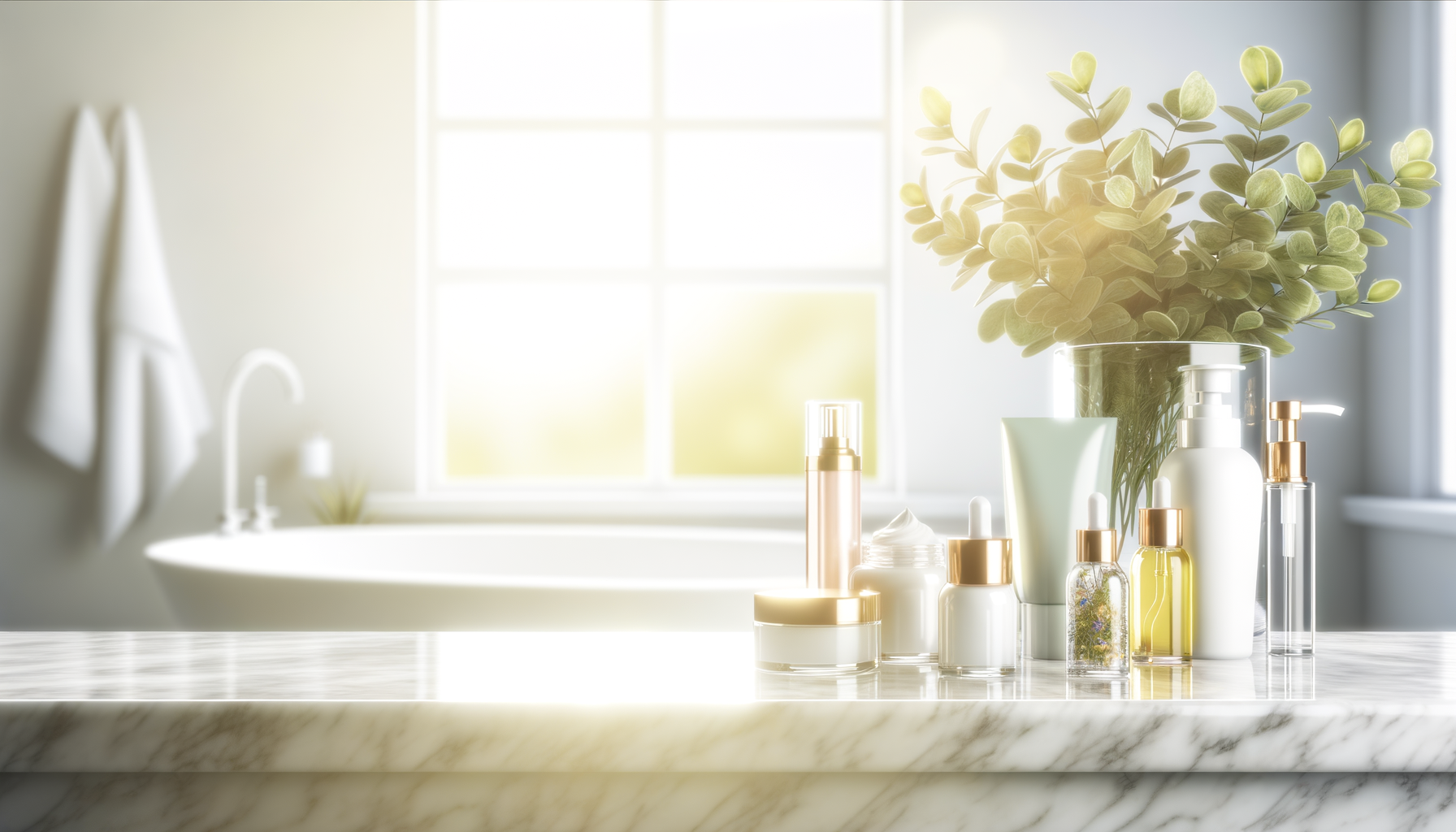
Popular Read: Endocrine Disruptors in Skincare: What You Need to Know
Potential Health Risks Associated with Benzophenone
Endocrine Disruption and Hormonal Imbalance
Benzophenone-3 (BP-3), commonly known as oxybenzone, is a prevalent ingredient in many sunscreen products due to its ability to absorb ultraviolet (UV) radiation. However, its small molecular size allows it to penetrate the skin and enter the bloodstream, leading to concerns about its potential as an endocrine-disrupting chemical (EDC). Studies have shown that BP-3 can bind to hormone receptors, mimicking the effects of natural hormones and potentially causing hormonal imbalances. For instance, BP-3 has been found to exhibit estrogenic activity, which could lead to altered reproductive functions and developmental issues. Additionally, BP-3 exposure has been associated with lower testosterone levels in men and altered thyroid hormone levels, which are critical for metabolism and growth regulation.
Links to Breast Cancer
The potential carcinogenic effects of BP-3 are particularly concerning in relation to breast cancer. As an EDC, BP-3 can interfere with the normal function of hormones that regulate cell growth and differentiation. In vitro studies have demonstrated that BP-3 can stimulate the proliferation of breast cancer cells, suggesting a possible link between BP-3 exposure and the development or progression of hormone-dependent cancers. While direct evidence in humans is limited, the ability of BP-3 to act as an estrogen mimic raises significant concerns about its long-term impact on breast tissue and the risk of breast cancer.
Other Health Concerns
Beyond its endocrine-disrupting properties, BP-3 has been implicated in a range of other health concerns. Dermatological reactions such as allergic contact dermatitis and photoallergic reactions have been reported, highlighting the potential for BP-3 to cause skin irritation and sensitization. Additionally, there is evidence to suggest that BP-3 may contribute to developmental and reproductive toxicity, with studies indicating potential effects on fetal development, birth outcomes, and fertility. Neurotoxic effects have also been observed, with BP-3 exposure linked to behavioral changes and potential risks to cognitive function. The ability of BP-3 to induce oxidative stress and generate reactive oxygen species (ROS) further underscores its potential to cause cellular damage and contribute to various health issues.
In summary, while BP-3 serves as an effective UV filter, its potential health risks, particularly its role as an endocrine disruptor, its links to breast cancer, and other health concerns, warrant careful consideration. As research continues to uncover the multifaceted impacts of BP-3 on human health, it is crucial for consumers to be informed and for regulatory bodies to reassess the safety of this widely used chemical.
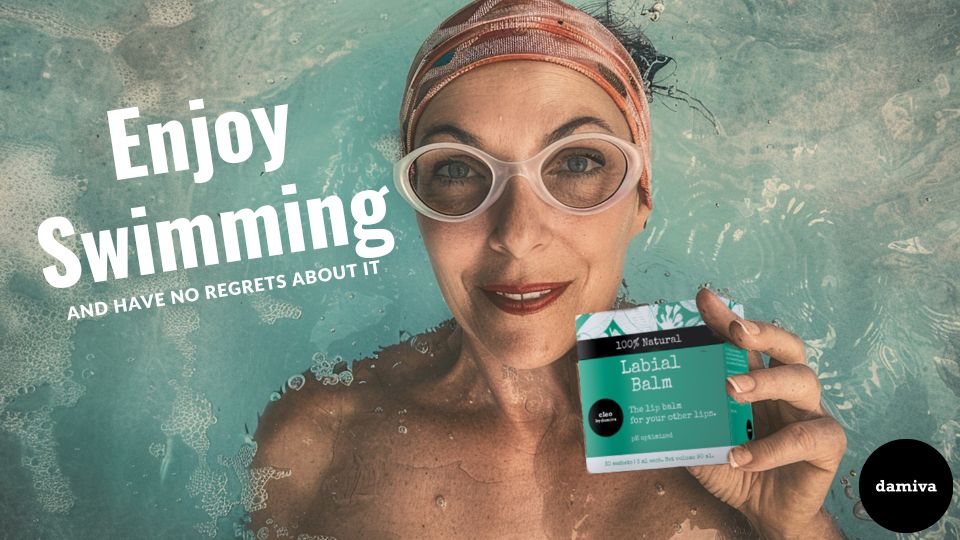
Environmental Impact of Benzophenone
Effects on Aquatic Life
Benzophenone and its derivatives, particularly oxybenzone (BP-3), have been identified as significant environmental contaminants, posing a threat to aquatic ecosystems. Studies have shown that BP-3 can cause coral bleaching by increasing susceptibility to bleaching, causing DNA damage, abnormal skeleton growth, and deformities in juvenile corals. This compound is not only toxic to corals but also to other marine organisms, including fish and algae, leading to oxidative stress and potential disruption of marine food webs.
BP-3 is introduced into aquatic environments through various pathways, including wastewater effluent and direct input from swimmers wearing sunscreen. The concentrations of BP-3 found in coastal waters have been detected globally, with areas of high tourism experiencing particularly high levels due to the use of personal care products containing UV filters. The presence of BP-3 in the environment has been linked to endocrine disruption in fish, leading to reproductive and developmental issues.
Persistence in the Environment
Benzophenones, due to their lipophilic nature, tend to accumulate in the environment and demonstrate high stability. For instance, the half-life of oxybenzone in surface waters is reported to be approximately 2.4 years. This persistence means that even low-level exposure can accumulate over time, leading to chronic effects on aquatic life and ecosystems. The inefficient removal of benzophenones by wastewater treatment plants further exacerbates their persistence, allowing these compounds to enter and remain in the aquatic environment.
Impact on Ecosystems
The impact of benzophenones on ecosystems is multifaceted. By affecting the health and viability of coral reefs, which are critical habitats for a vast array of marine species, benzophenones indirectly threaten biodiversity. Coral reefs provide food, shelter, and breeding grounds for many organisms; thus, their degradation can lead to a decline in fish populations and other marine life, altering the balance of the ecosystem.
Furthermore, the disruption of the endocrine systems of aquatic organisms can lead to skewed sex ratios and reduced fertility, impacting population dynamics and the long-term sustainability of species. The bioaccumulation of benzophenones in the food chain also poses a risk to higher-trophic-level organisms, including humans, who may consume contaminated seafood.
In conclusion, the environmental impact of benzophenones, particularly on aquatic life and ecosystems, is a growing concern. The persistence of these compounds in the environment and their ability to disrupt the normal functioning of marine organisms highlight the need for regulatory actions and increased consumer awareness to mitigate their harmful effects.

Do you have the most commonly used but toxic, disease bringing chemicals in your skin care? Many chemicals in skincare are hormone disruptors and make menopause symptoms worse.
Find out more…
Regulatory Actions and Consumer Awareness
Benzophenone Bans and Restrictions
Concerns over the safety of benzophenone and its derivatives, particularly benzophenone-3 (BP-3 or oxybenzone), have led to regulatory scrutiny and restrictions. The European Union, for instance, capped the concentration of BP-3 in sunscreen products to 6% in 2017. China followed suit, setting the maximum allowable concentration of BP-3 in cosmetics at 10%, with lower limits for other derivatives. These regulatory measures reflect a growing recognition of the potential risks associated with prolonged benzophenone exposure, including endocrine disruption and environmental persistence.
Public Perception and Knowledge
The public’s understanding of the potential hazards of benzophenone in personal care products is evolving. While awareness of the need for UV protection is high, knowledge about the specific ingredients in sunscreens and their side effects is less widespread. Biomonitoring studies have detected benzophenones in various human specimens, indicating ubiquitous exposure. However, the nuances of these findings and their implications for health are not well understood by consumers, leading to a gap between scientific knowledge and public awareness.
The Role of Consumer Advocacy
Consumer advocacy groups have played a pivotal role in bringing attention to the potential dangers of benzophenone. By disseminating research findings, advocating for stricter regulations, and promoting safer alternatives, these organizations empower consumers to make informed choices. They also pressure manufacturers to reformulate products and support legislative efforts to ban or restrict harmful UV filters. The collective action of informed consumers and advocacy groups can thus drive both market and regulatory changes, ultimately leading to safer products and a more informed public.
Alternatives to Benzophenone
Natural and Safer UV Filters
Given the potential risks associated with benzophenone, consumers and manufacturers are turning towards natural and safer alternatives for UV protection. These alternatives include minerals like zinc oxide and titanium dioxide, which provide broad-spectrum UV protection by physically blocking the sun’s rays. Unlike chemical filters, these minerals do not penetrate the skin, reducing the risk of systemic absorption and endocrine disruption. Additionally, plant-derived ingredients such as red raspberry seed oil, carrot seed oil, and aloe vera offer some degree of UV protection while also nourishing the skin.
Innovations in Sun Protection
Advancements in sun protection are continually being made as researchers seek to develop safer and more effective UV filters. Newer ingredients, such as bis-ethylhexyloxyphenol methoxyphenyl triazine (BEMT), have shown promise due to their high photostability and minimal skin penetration. Innovations also extend to encapsulation technologies that improve the safety profile of UV filters by preventing direct skin contact. Additionally, wearable UV-monitoring devices and smartphone apps have emerged, empowering individuals to manage their sun exposure proactively.
How to Identify Benzophenone-Free Products
Identifying benzophenone-free products requires vigilance, as this chemical can be listed under various names, including oxybenzone, BP-3, or 2-hydroxy-4-methoxybenzophenone. Consumers should read product labels carefully and look for certifications such as “reef-safe” or “benzophenone-free.” It is also advisable to research brands committed to excluding harmful chemicals from their formulations. For those seeking to avoid benzophenone and its derivatives entirely, consulting databases from environmental and health advocacy groups can be a valuable resource. Better go to full chemical-free products as outlined below.
By the way, something for you, a little gift!!!
I am just in the middle of publishing my book. It’s about How women can balance their hormones. One part is about food and diet, of course.
Follow this link and enter your email.
I will send you this part of the book for free once the book is published. It has many concrete, practical tips and recipes and will help you feel better during menopause or times of Big hormonal fluctuations.
Annette, Damiva Lead for Health & Wellness

Holistic Approaches to Sun Protection and Skin Care
Lifestyle Changes for Better Skin Health
While sunscreen plays a critical role in protecting the skin from harmful UV rays, a holistic approach to skin health encompasses more than just topical applications. Lifestyle changes can significantly enhance the skin’s natural defense mechanisms against UV damage. These changes include seeking shade during peak sun hours, wearing protective clothing such as wide-brimmed hats and long-sleeved shirts, and incorporating sunglasses with UV protection to shield the eyes and surrounding skin. Additionally, regular skin examinations for early detection of any changes or abnormalities are essential for maintaining skin health.
Dietary Considerations for UV Protection
The adage “you are what you eat” holds true when it comes to skin health. A diet rich in antioxidants can provide an internal line of defense against UV-induced damage. Foods high in vitamins C and E, beta-carotene, and other antioxidants help neutralize free radicals generated by UV exposure. Incorporating a variety of colorful fruits and vegetables, such as leafy greens, berries, carrots, and tomatoes, can bolster the skin’s resilience. Omega-3 fatty acids, found in fish and flaxseeds, are also known for their anti-inflammatory properties, which can aid in skin repair and protection.
The Importance of a Chemical-Free Lifestyle
Minimizing exposure to harmful chemicals is a cornerstone of a holistic approach to sun protection and skin care. Choosing personal care products, including sunscreens, that are free from potentially harmful ingredients like benzophenone and its derivatives is crucial. Consumers should opt for products with natural or safer chemical UV filters, and be vigilant about reading labels to avoid endocrine disruptors and other toxic substances. Embracing a chemical-free lifestyle extends beyond skincare products to include household cleaners, food packaging, and other everyday items, reducing the overall toxic burden on the body.
Do you know the 3 main ways how your body is exposed to harmful chemicals, which affect your hormones, your thyroid, health and beauty?
If not, it may be time to learn about them. It takes about 1-2 minutes.
We have a few suggestions how to avoid these silent health and immune system killers in our new guide.
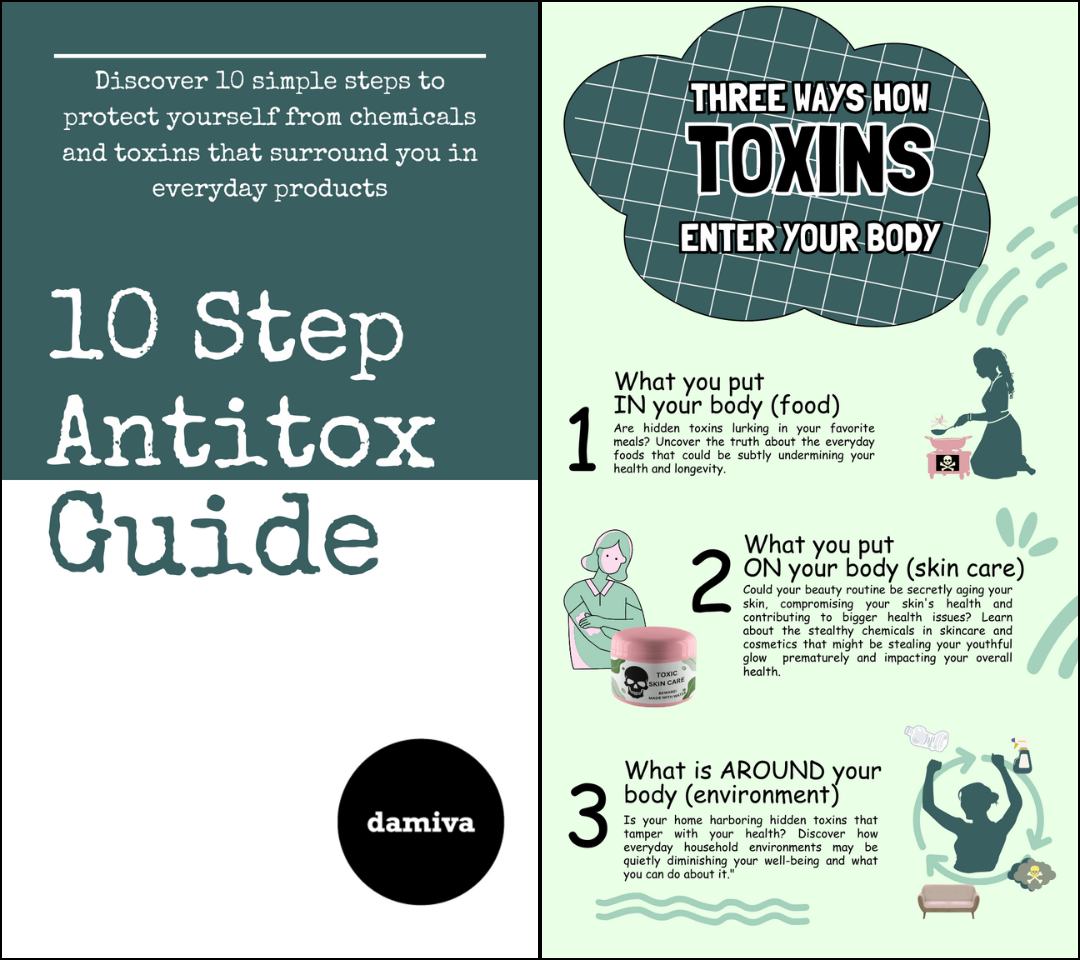
How to Reduce Your Chemical Load from Skincare
Choosing water-free products is a safer option, as they can be formulated without the inclusion of harmful chemicals. This is particularly important because water is a fertile environment for the growth of bacteria, mold, and microbes. This biological activity necessitates the use of chemical preservatives in water-based products such as lotions, creams, balms, and more. These preservatives serve a dual purpose; they are lethal to microbes, effectively inhibiting their growth, but they also pose a significant risk to human health.
Many of these preservatives function as endocrine disruptors, also known as endocrine-disrupting chemicals (EDC). These chemicals interfere with the body’s hormonal system, which regulates a wide range of biological processes, from metabolism to growth, behavior, and reproduction. Disruption of this delicate system can lead to a variety of health issues, including dry and/or sagging skin. This is why it’s crucial to scrutinize product ingredient lists. Products that list water (aqua, eau, juice) will also contain these chemical preservatives.
For those seeking a safer, healthier alternative, consider Damiva’s water-free skincare line. This line is unique in that it is a patented range of products that are both chemical-free and water-free. The absence of water eliminates the need for chemical preservatives, making these products safer for long-term use. Furthermore, the absence of chemicals means that these products are less likely to disrupt the body’s hormonal system, reducing the risk of associated health issues. This makes Damiva’s water-free skincare line not only a safer choice but also a healthier one for your skin and overall well-being.

Feeling You Have a Right to Safe Beauty & Fem Care?
If so, it may be time for a change. It starts with knowledge. We have a few suggestions in our new guides.
Conclusion: Empowering Choices for Health and Beauty
Taking Control of Your Health
As we navigate the complex world of skincare and sun protection, it becomes increasingly clear that the choices we make have profound effects on our health. The discussion surrounding benzophenone, a common UV filter, has shed light on the potential risks associated with certain chemical ingredients. Empowerment begins with education; by understanding the ingredients in our products and their possible health implications, we can make informed decisions that prioritize our well-being. Opting for benzophenone-free products is a proactive step towards minimizing exposure to substances that may disrupt our hormonal balance or increase the risk of health issues.
Supporting a Sustainable and Healthy Future
The environmental footprint of our beauty routines is not to be overlooked. Benzophenone, among other chemical UV filters, has been shown to have detrimental effects on aquatic ecosystems, particularly coral reefs. By choosing products that are safe for the environment, we contribute to the preservation of biodiversity and the health of our planet. Sustainable choices in personal care are not just about the immediate benefits but also about leaving a legacy of a healthier earth for future generations.
Final Thoughts on Benzophenone and Consumer Responsibility
While benzophenone has been a staple in UV protection, the potential risks it poses cannot be ignored. As consumers, we hold the power to drive change in the beauty industry through our purchasing decisions. By supporting brands that are committed to non-toxic and eco-friendly practices, we encourage a shift towards more responsible production and formulation. It is our collective responsibility to demand transparency and to champion products that align with our values of health, sustainability, and ethical consumerism.
In conclusion, the journey towards a more conscious approach to beauty and skincare is ongoing. It requires vigilance, commitment, and a willingness to adapt as new information emerges. By taking control of our health, supporting sustainable practices, and understanding our role as responsible consumers, we can help ensure that the products we use contribute to our overall well-being and the well-being of the world we inhabit. Let us embrace the power we have to make choices that help more than harm, for ourselves and for the environment.




